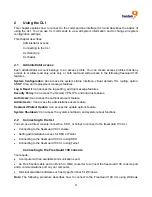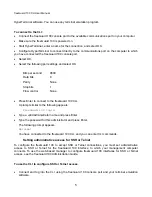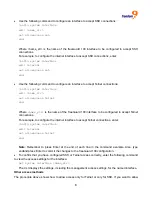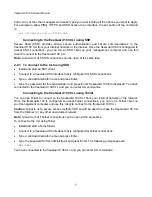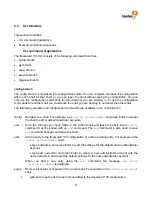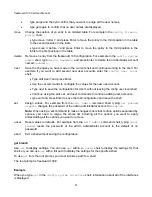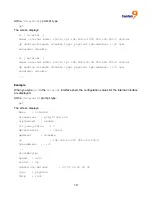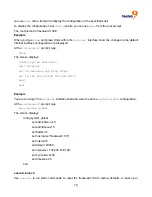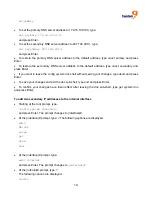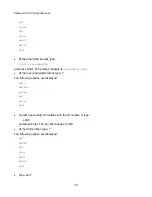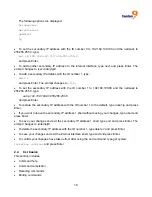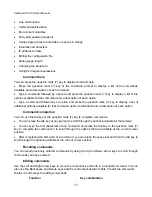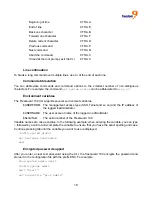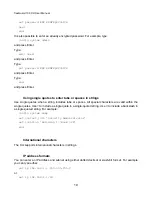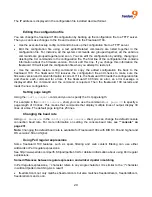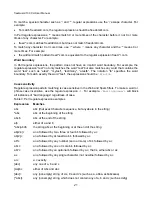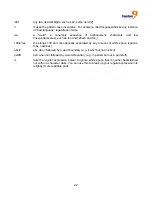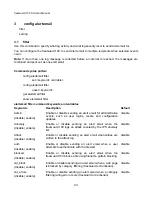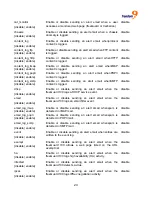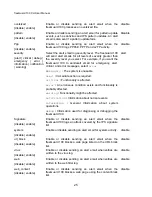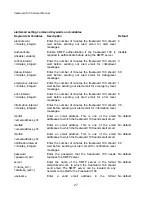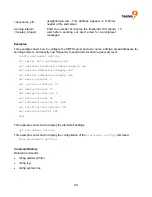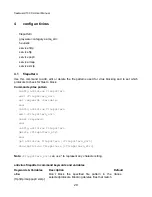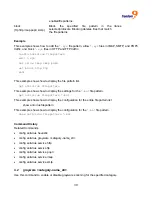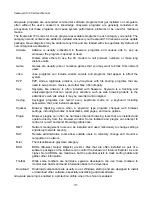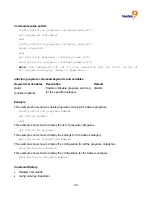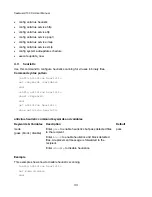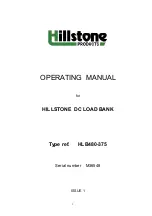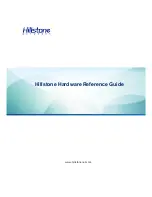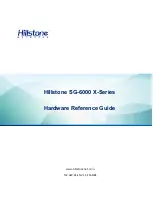
18
Beginning of line
CTRL+A
End of line
CTRL+E
Back one character
CTRL+B
Forward one character
CTRL+F
Delete current character
CTRL+D
Previous command
CTRL+P
Next command
CTRL+N
Abort the command
CTRL+C
If used at the root prompt, exit the CLI
CTRL+C
Line continuation
To break a long command over multiple lines, use a \ at the end of each line.
Command abbreviation
You can abbreviate commands and command options to the smallest number of non-ambiguous
characters. For example, the command
get system status
can be abbreviated to
g sy st.
Environment variables
The FreeGuard 100 CLI supports several environment variables.
$USERFROM The management access type (SSH, Telnet and so on) and the IP address of
the logged inadministrator.
$USERNAME The user account name of the logged in administrator.
$SerialNum
The serial number of the FreeGuard 100.
Variable names are case sensitive. In the following example, when entering the variable, you can type
$
followed by a tab to auto-complete the variable to ensure that you have the exact spelling and case.
Continue pressing tab until the variable you want to use is displayed.
config system global
set hostname $SerialNum
end
Encrypted password support
After you enter a clear text password using the CLI, the freeGuard 100 encrypts the password and
stores it in the configuration file with the prefix ENC. For example:
show system admin user1
config system admin
edit "user1"
set accprofile "prof_admin"
Summary of Contents for freeGuard 100
Page 1: ...freeGuard 100 UTM Firewall CLI USER S MANUAL P N F0025000 Rev 1 1...
Page 3: ......
Page 7: ......
Page 87: ...80 The config ips anomaly command has 1 subcommand config limit...
Page 183: ...176...

